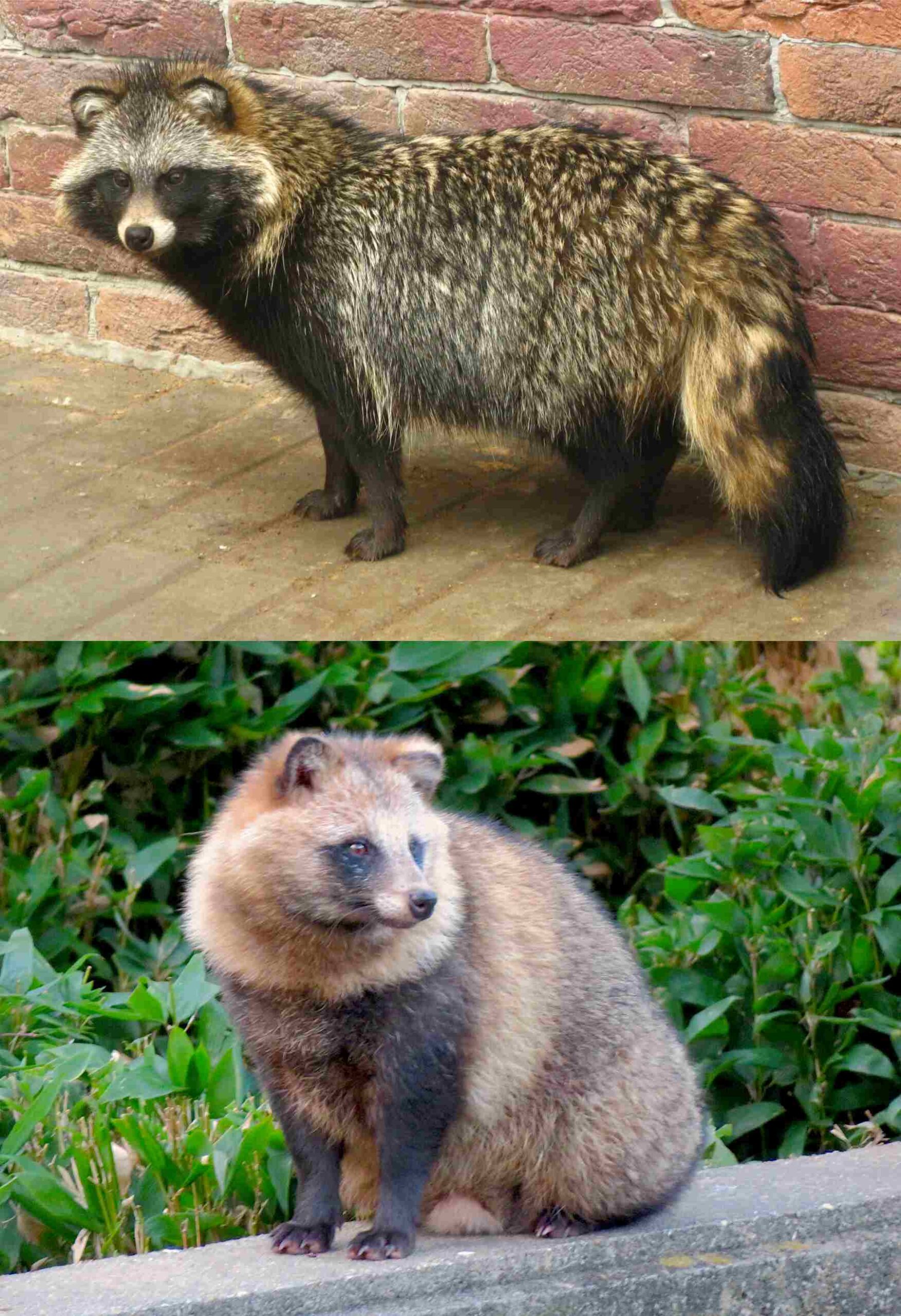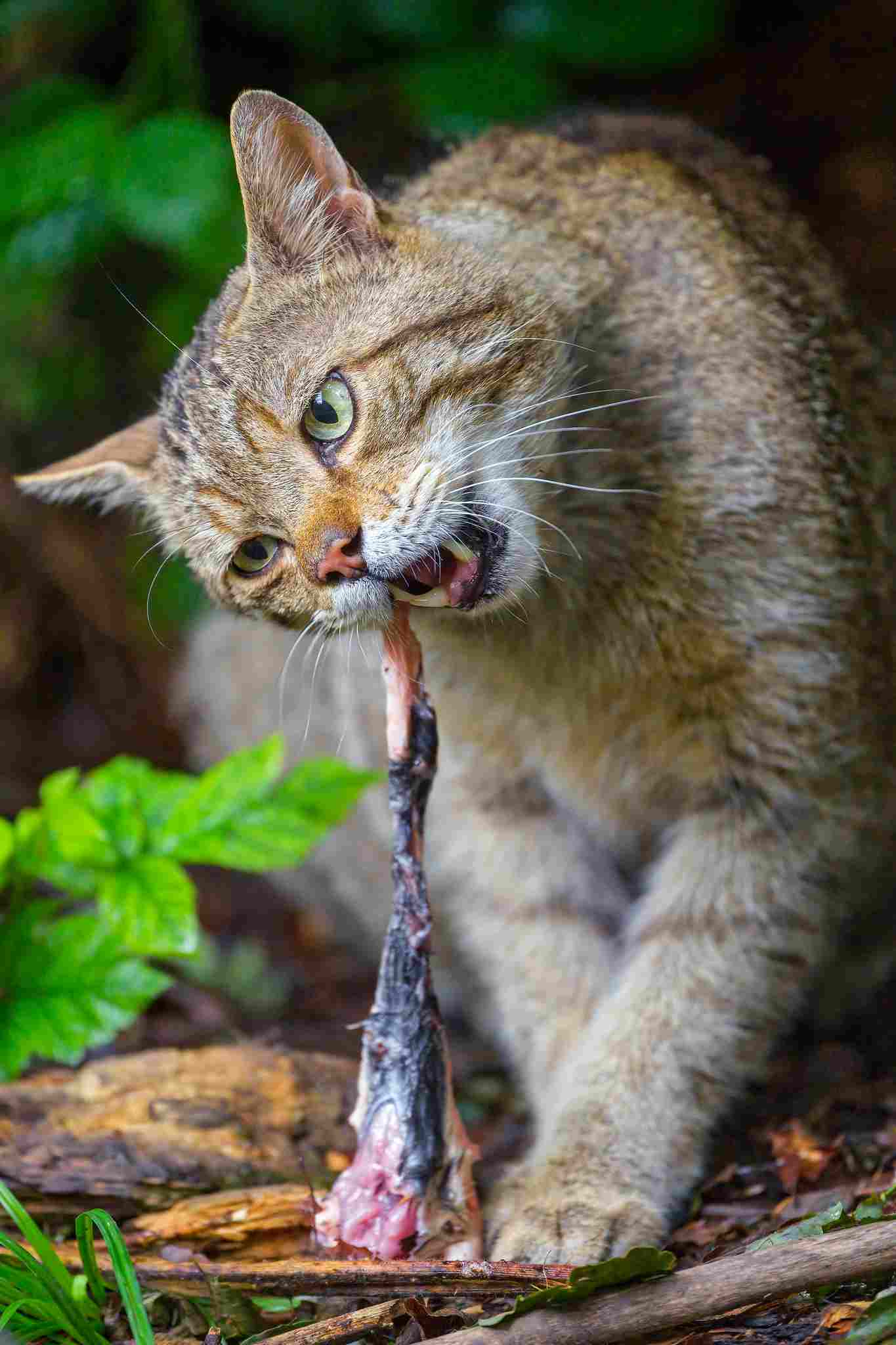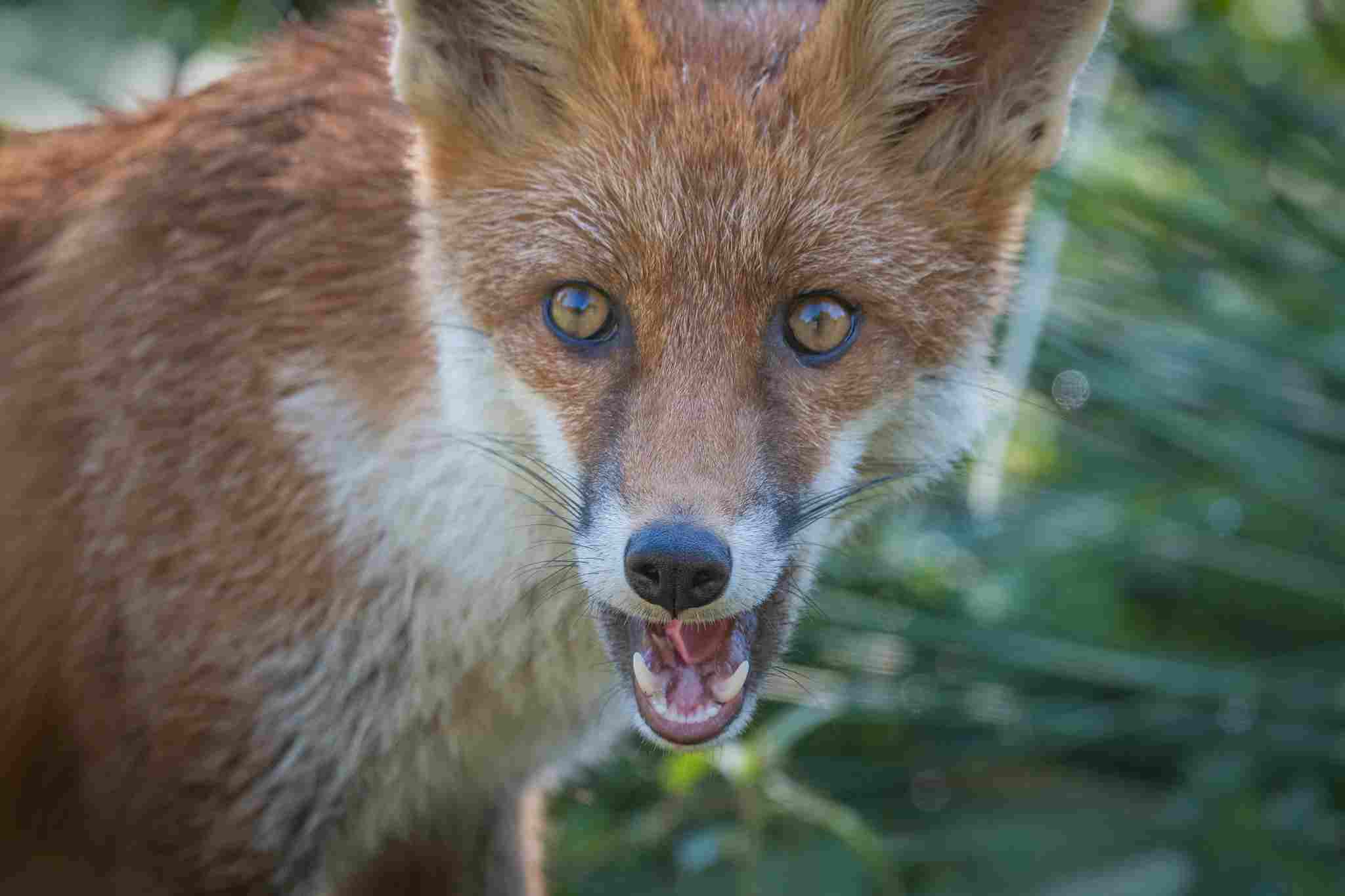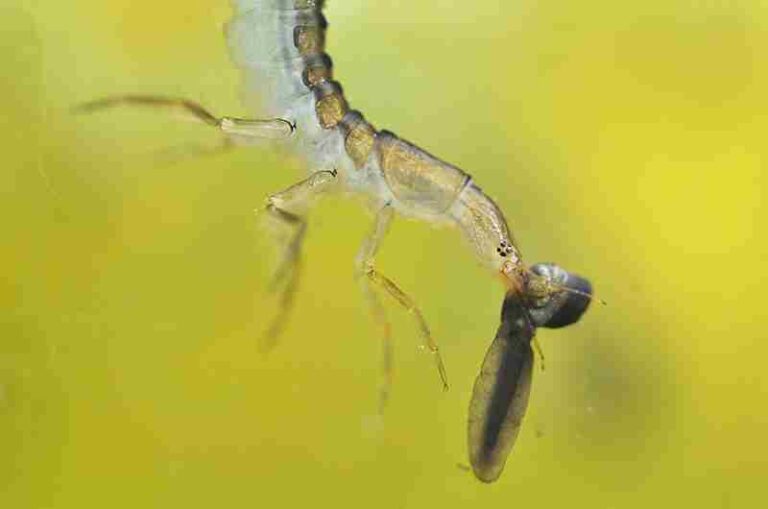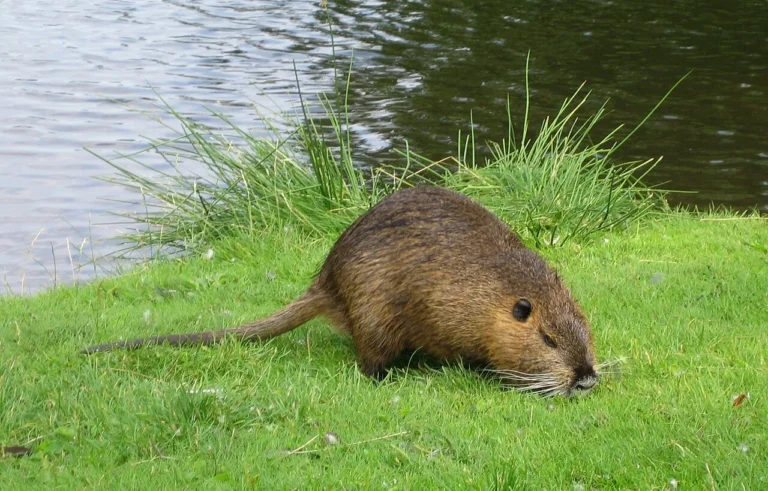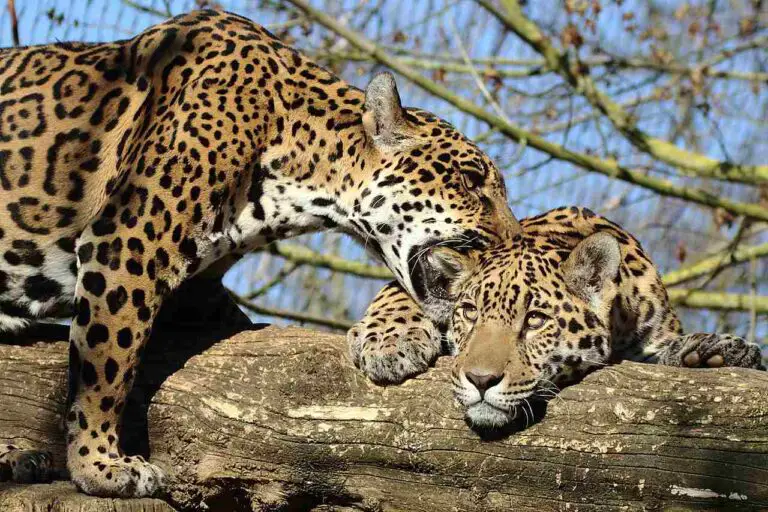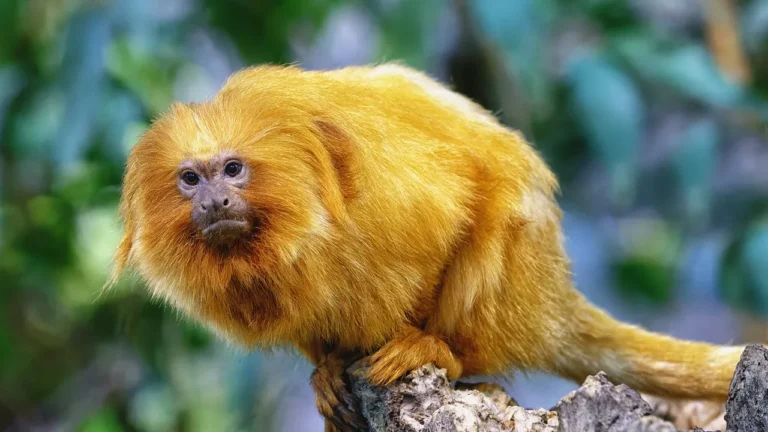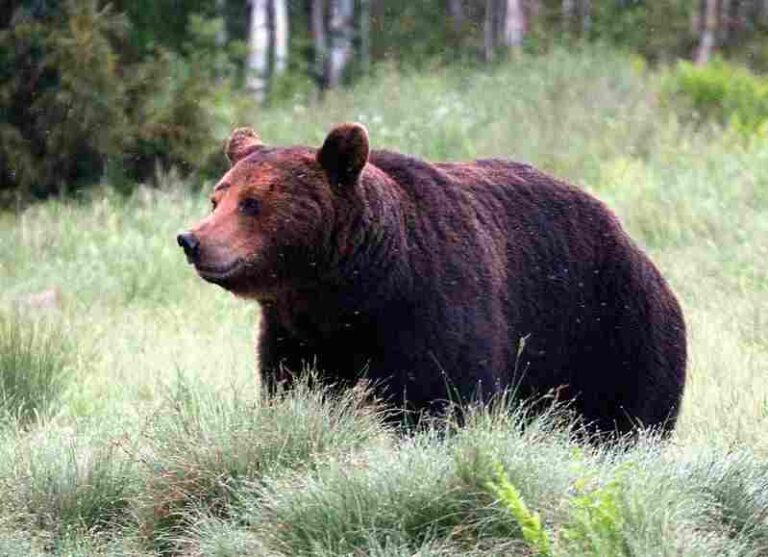Raccoon Vs Skunk Tracks, Size, Weight, Overall Comparison
When assessing a potential confrontation between a raccoon and a skunk, we delve into the nuanced dynamics shaped by their shared nocturnal habits. While a raccoon possesses advantages in terms of weight, strength, speed, and eyesight, a skunk’s formidable defense mechanism with secretions adds a layer of complexity to predicting the outcome.
Raccoon vs Skunk Who Would Win: Unraveling the Predatory Dynamics
In the scenario of a raccoon facing off against a skunk, a multifaceted analysis reveals the interplay of their shared and distinct traits. Despite the raccoon’s superiority in terms of weight, strength, and agility, the skunk’s unique defensive capabilities introduce a compelling variable that can alter the course of a physical encounter.
I). Raccoon’s Weight, Strength, and Speed:
– Raccoons, with their heavier build, superior strength, and enhanced speed, exhibit traits typically associated with successful predators. These attributes position the raccoon as a formidable force in a physical confrontation.
II). Raccoon’s Better Eyesight:
– The raccoon’s advanced eyesight provides a strategic advantage, contributing to its ability to assess and respond to situations with heightened awareness. This visual acuity enhances its predatory prowess.
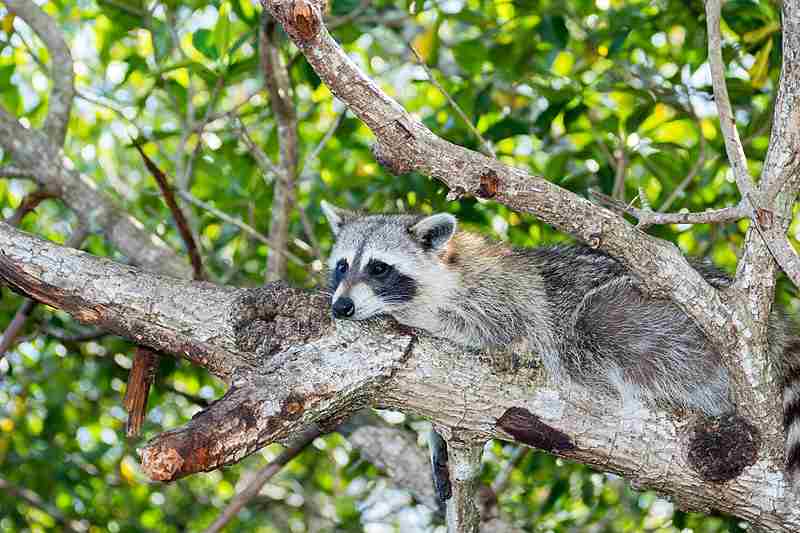
III). Skunk’s Defensive Secretions:
– Skunks, equipped with potent defensive secretions, possess a formidable deterrent against potential predators. Their ability to spray a noxious liquid serves as a potent means of protection, deterring adversaries and potentially turning the tide in their favor.
IV). Aggression and Predatory Behavior:
– Raccoons, known for their assertiveness and opportunistic hunting behavior, approach confrontations with a predatory mindset. This aggression, coupled with their agility, positions them as formidable opponents.
V). Predicting Outcomes:
– In a direct physical confrontation, the raccoon’s weight, strength, speed, and superior eyesight suggest it would likely emerge as the victor. However, the skunk’s defensive secretions introduce a significant wildcard that can repel the raccoon and potentially shift the dynamics in its favor.
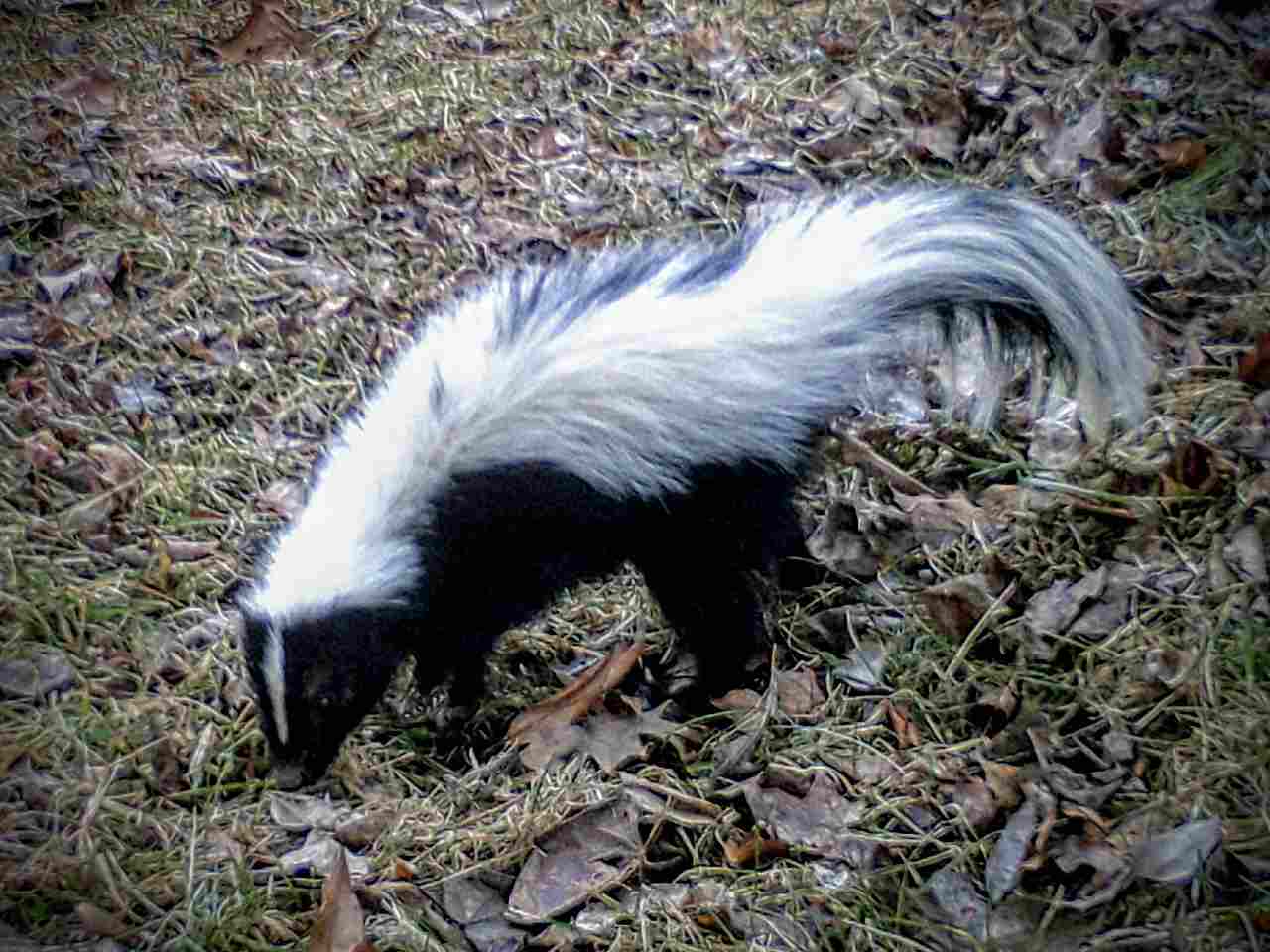
VI). Real-World Considerations:
– Real-world encounters between raccoons and skunks are influenced by factors such as habitat, behavior, and individual differences. While the raccoon holds advantages in various aspects, the skunk’s ability to deploy its defensive mechanism adds a layer of unpredictability to these interactions.
VII). Overall Dynamics:
– In this analysis, the raccoon’s physical prowess positions it as the technical frontrunner in a fight against a skunk. However, the skunk’s potent defensive secretions present a formidable countermeasure, emphasizing the importance of considering multifaceted dynamics in predicting outcomes between these nocturnal mammals.
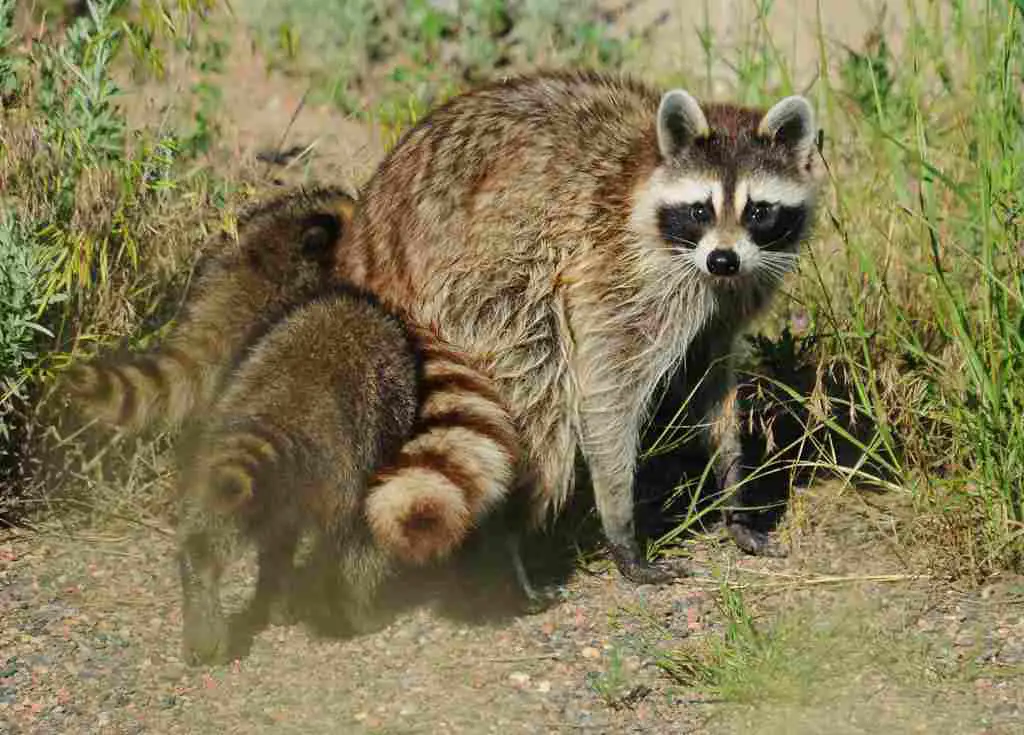
*Details of Comparison
| Criteria | Raccoon | Skunk |
| Taxonomy | Procyonidae family, Procyon genus. |
Mephitidae family, Mephitis or Spilogale genus.
|
| Appearance | Grayish fur with a black mask. |
Black and white patterns, warning coloration.
|
| Size | Similar size range: 2 to 3 feet. |
Similar size range: 1.5 to 2.5 feet.
|
| Weight | Falls in the range of 10 to 30 pounds. |
Falls in the range of 10 to 20 pounds.
|
| Bite Force (PSI) | Approximately 60 PSI. |
Bite force less studied, presumed lower.
|
| Physical Offensive Adv. | Sharp claws and dexterous paws. |
Spray a noxious liquid.
|
| Physical Defensive Adv. | Climbing abilities and agility. |
Defensive spraying.
|
| Speed | Up to 15 mph. | 5 to 10 mph. |
| Agility | Generally more agile. |
Moderately agile.
|
| Senses | Differences in night vision, touch, and smell. |
Good sense of smell, moderate vision, acute hearing.
|
| Physical Capacity | More diverse range. |
Primarily ground-dwelling.
|
| Habitat Preference(s) | Adaptable; commonly near water. |
Prefers grasslands, meadows, and woodlands.
|
| Tracks | Prints more hand-like. |
Clawed prints with a unique pattern.
|
| Lifespan | 2 to 3 years in the wild. |
2 to 4 years in the wild.
|
| Mode of Feeding | Omnivorous diet; opportunistic. |
Omnivores, feeding on insects, small mammals, fruits.
|
| Intelligence | Highly intelligent. |
Moderate intelligence.
|
| Social Behavior | Typically solitary; communal during mating. |
Mostly solitary; limited social interactions.
|
| Reproduction | Polygamous; mating late winter or early spring. |
Polygamous; mating season varies.
|
| Parental Behavior | Females construct nests; provide care. |
Mothers create dens; females primary caregivers.
|
| Proximity to Humans | Highly adaptable to urban areas. |
Can inhabit suburban areas.
|
| Behavior Toward Humans | Can display bold behavior. |
Generally avoid human interaction; may spray.
|
| Danger Posed to Humans | Generally not dangerous; may carry diseases. |
Typically not aggressive; may spray if threatened.
|
| Associated Precautions | Avoid feeding or approaching; secure garbage. |
Keep a safe distance; avoid provoking or cornering.
|
| Conservation Status | Least Concern; widespread adaptability. |
Varies by species; some Least Concern, others face threats.
|
| Conclusion | I) Similarities: Adaptability, opportunistic omnivores. |
II) Differences: Defensive mechanisms, intelligence, conservation statuses.
|
Key Points
- Both raccoons and skunks are adaptable and opportunistic omnivores.
- Raccoons generally have a more diverse range of physical abilities.
- Raccoons are recognized for higher intelligence compared to skunks.
- Both exhibit polygamous mating systems with a similar mating season.
- Both species display maternal care, creating nests or dens for their young.
- Raccoons are highly adaptable to urban environments, while skunks can inhabit suburban areas.
- Raccoons may display bolder behavior toward humans, whereas skunks generally avoid interaction.
- Differences in defensive mechanisms, intelligence, and conservation statuses highlight distinctions between raccoons and skunks.
1. Taxonomy:
Raccoon:
Kingdom: Animalia
Phylum: Chordata
Class: Mammalia
Order: Carnivora
Family: Procyonidae
Genus: Procyon
Species: Procyon lotor
Skunk:
Kingdom: Animalia
Phylum: Chordata
Class: Mammalia
Order: Carnivora
Family: Mephitidae
Genus: Mephitis (for striped skunks) or Spilogale (for spotted skunks)
Species: Varied within the respective genera
2. Appearance:
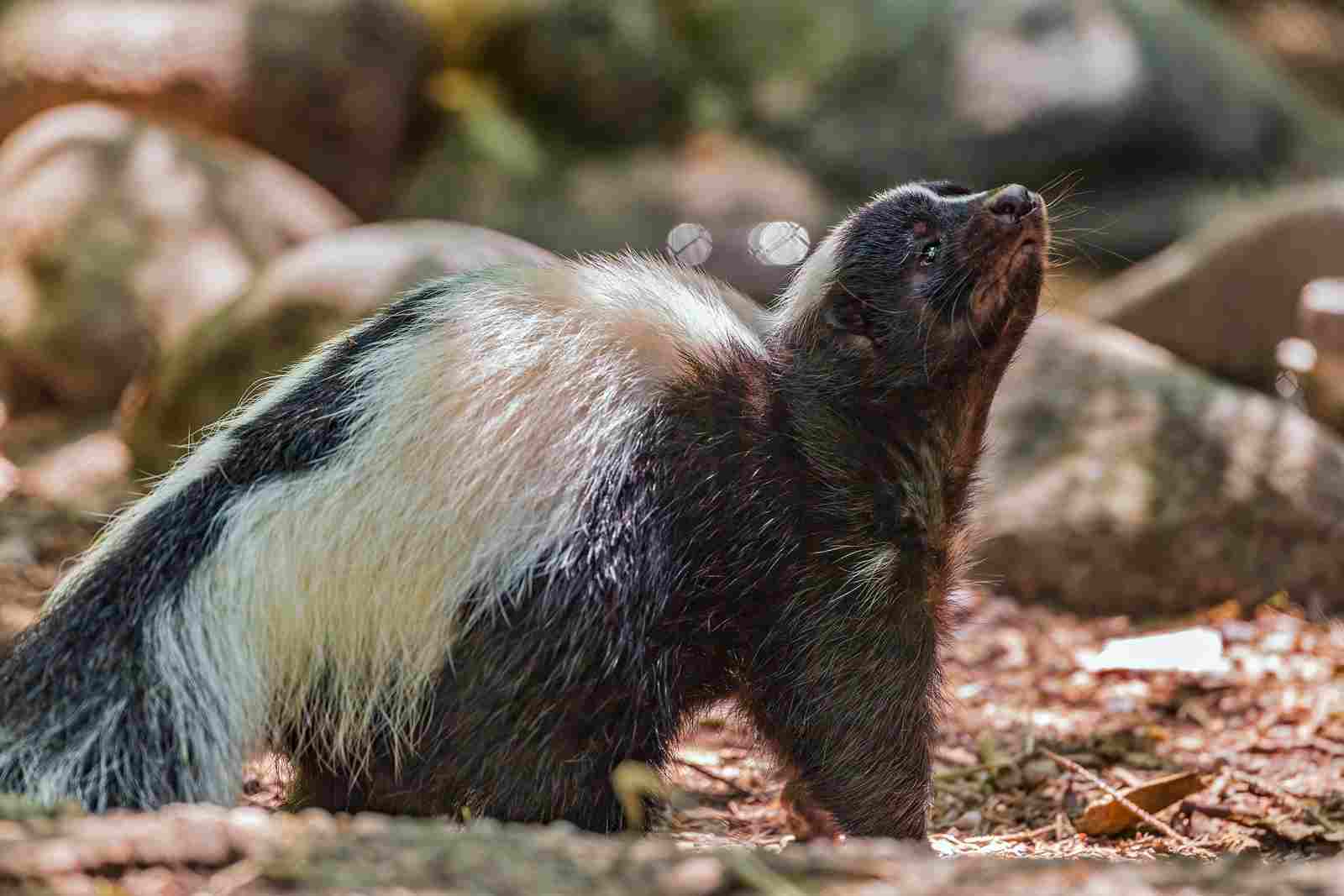
Raccoon:
Distinctive black mask across eyes and bushy, ringed tail.
Grayish fur with a mix of brown and black hues.
Skunk:
Varies in coloration, commonly black and white with bold patterns.
Characterized by a well-known warning coloration, signaling their ability to spray a foul-smelling liquid.
Comparison:
Both have fur, but raccoons exhibit more subtle coloration, while skunks are recognized for their contrasting black and white patterns.
Ecological Implications:
The coloration of skunks serves as a warning to potential predators, contributing to their defense mechanism, whereas raccoons may rely on their nocturnal behavior and dexterous paws for survival.
3. Size:
Raccoon:
Adults typically measure 2 to 3 feet in length (excluding the tail).
Skunk:
Similar in size to raccoons, with lengths ranging from 1.5 to 2.5 feet.
Comparison:
Both raccoons and skunks share a comparable size range, adapting to similar ecological niches.
Ecological Implications:
Similar sizes may imply similar ecological roles, possibly competing for resources in overlapping habitats.
4. Weight:
Raccoon:
Adults usually weigh between 10 to 30 pounds.
Skunk:
Weight range for adult skunks is also around 10 to 20 pounds.
Comparison:
Both raccoons and skunks fall within a similar weight range.
Ecological Implications:
Shared weight characteristics may suggest adaptations to similar dietary preferences or hunting strategies.
5. Bite Force (PSI):

Raccoon:
Bite force estimated around 60 PSI.
Skunk:
Bite force information less studied but presumed to be lower than raccoons.
Comparison:
Raccoons generally possess a stronger bite force compared to skunks.
Ecological Implications:
Raccoons may have a more robust ability to handle a variety of prey items, affecting their ecological interactions and dietary preferences.
6. Physical Offensive Advantages:
Raccoon:
Sharp claws and dexterous paws aid in hunting and manipulating objects.
Skunk:
Primary offensive advantage is the ability to spray a noxious liquid as a defense mechanism.
Comparison:
Raccoons rely on physical dexterity, while skunks possess a unique chemical defense.
Ecological Implications:
Different offensive strategies contribute to their adaptation in diverse ecological niches.
7. Physical Defensive Advantages:
Raccoon:
Climbing abilities and agility provide escape routes from predators.
Skunk:
Defensive spraying acts as a deterrent against potential threats.
Comparison:
Raccoons utilize agility, whereas skunks employ chemical defense for protection.
Ecological Implications:
Diverse defensive mechanisms suggest adaptations to various ecological challenges.
8. Speed (Km/hour or Mile/hour):
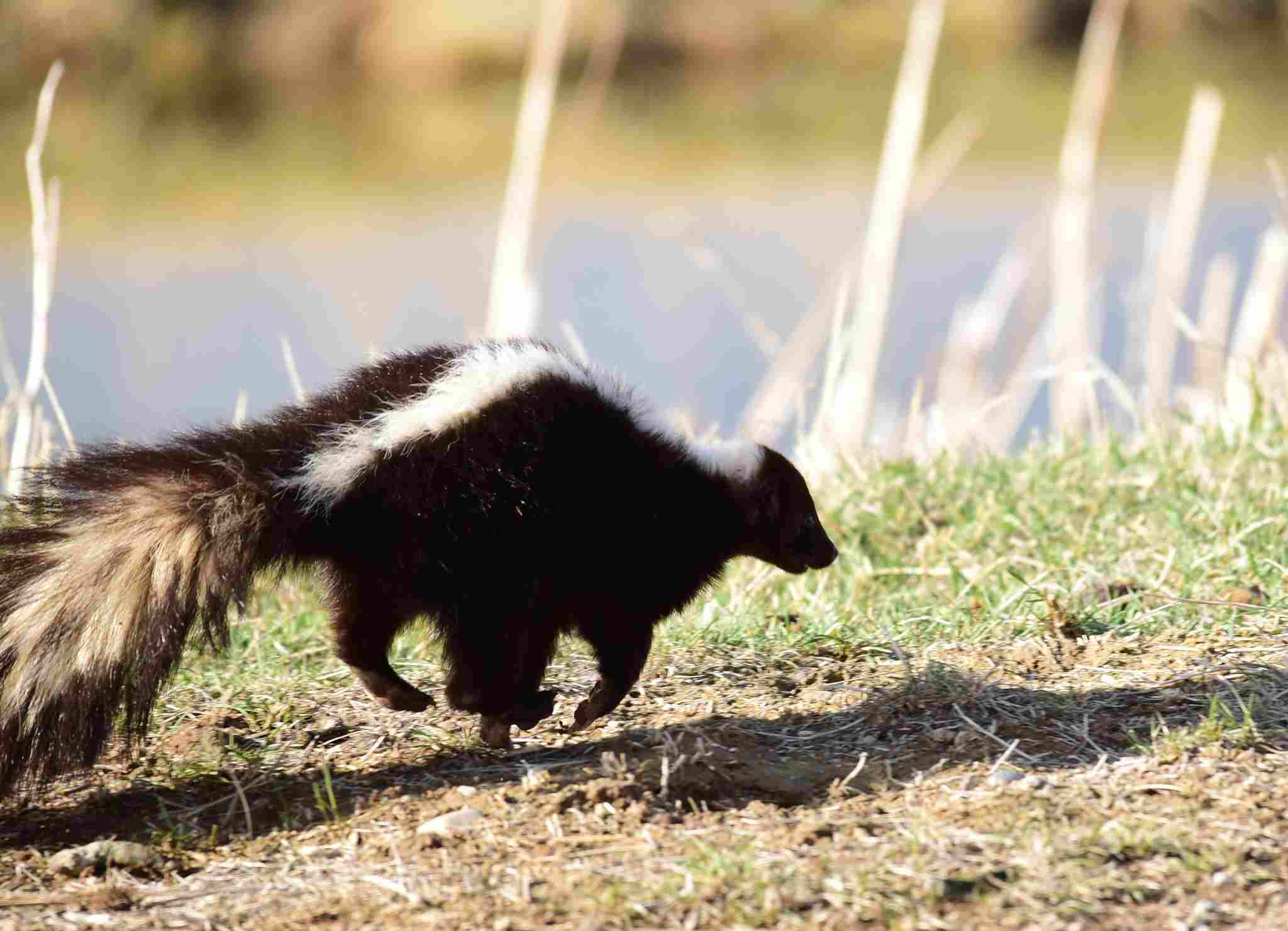
Raccoon:
Capable of running at speeds up to 15 miles per hour.
Skunk:
Speeds around 5 to 10 miles per hour.
Comparison:
Raccoons generally exhibit faster running speeds compared to skunks.
Ecological Implications:
Speed differences may influence hunting success, escape from predators, and overall survival strategies in their respective habitats.
9. Agility:
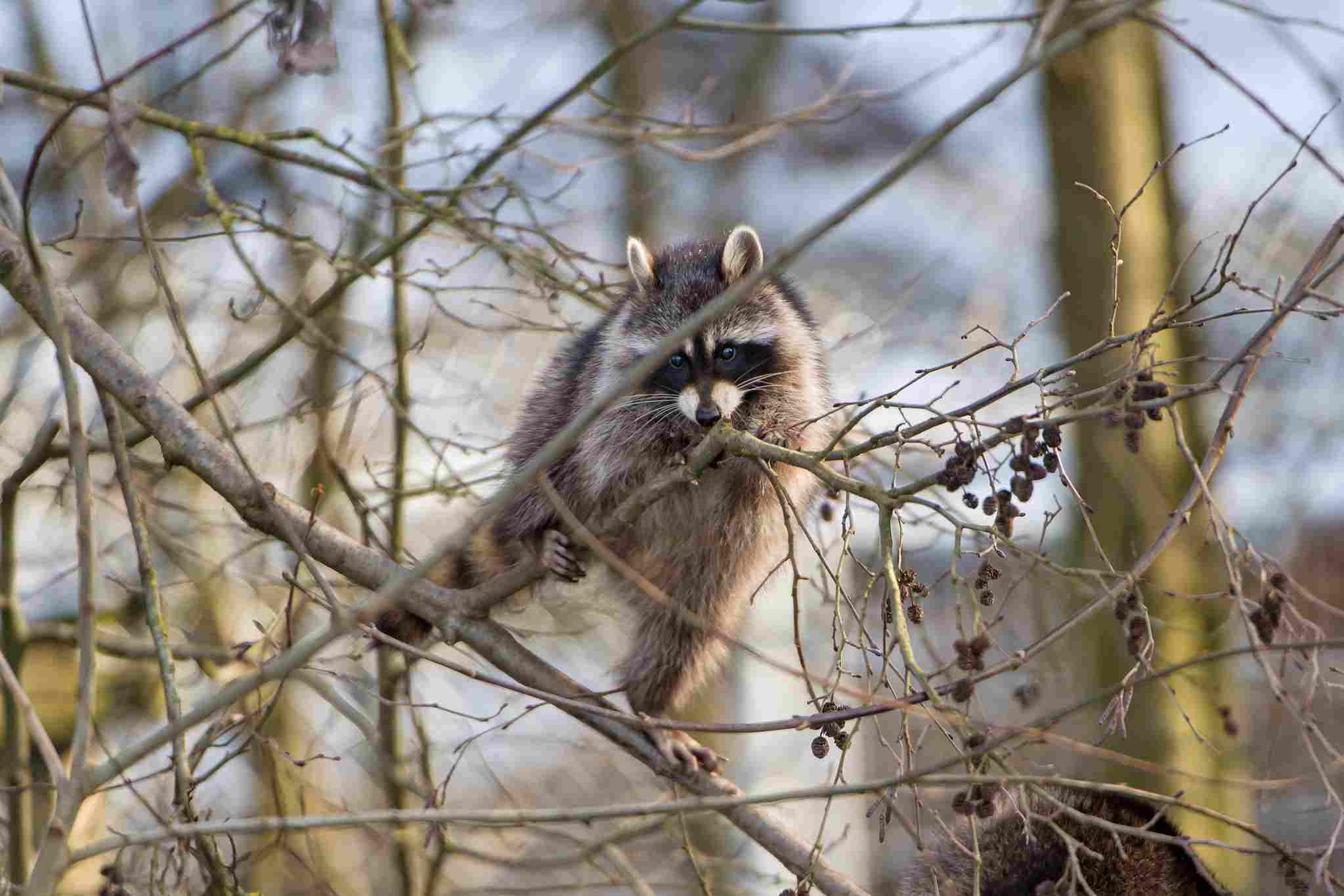
Raccoon:
Agile climbers and adept at navigating various terrains.
Skunk:
Moderately agile but relies more on defensive spraying.
Comparison:
Raccoons are generally more agile, especially in climbing, compared to skunks.
Ecological Implications:
Agility differences may influence their ability to access different food sources and escape predators.
10. Senses:
Raccoon:
Excellent night vision, keen sense of touch with their paws, and a well-developed sense of smell.
Skunk:
Good sense of smell, moderate vision, and acute hearing.
Comparison:
Raccoons and skunks possess varied strengths in their senses, with raccoons excelling in night vision.
Ecological Implications:
Differences in sensory capabilities may influence their hunting strategies and adaptation to nocturnal or diurnal activities.
11. Overall Physical Capacity:
Raccoon:
Versatile physical abilities, including climbing, swimming, and scavenging.
Skunk:
Primarily ground-dwelling with limited climbing abilities; relies on spraying for defense.
Comparison:
Raccoons showcase a more diverse range of physical capacities compared to skunks.
Ecological Implications:
Diverse physical abilities contribute to their adaptability in different ecosystems.
12. Habitat Preference(s):
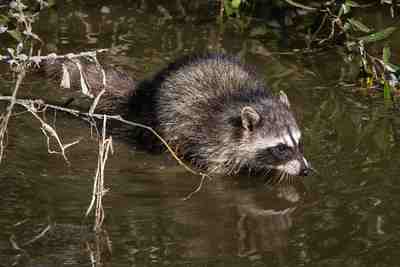
Raccoon:
Adaptable to various environments; commonly found near water sources.
Skunk:
Prefers grasslands, meadows, and woodland areas.
Comparison:
While both can adapt to different environments, raccoons may have a broader habitat range.
Ecological Implications:
Habitat preferences affect their interaction with other species and overall ecosystem dynamics.
13. Tracks:
Raccoon:
Distinctive prints with five toes and a shape resembling human hands.
Skunk:
Clawed prints with a unique pattern, resembling a combination of dog and cat prints.
Comparison:
Track patterns differ, with raccoon prints being more hand-like and skunk prints more clawed.
Ecological Implications:
Tracking differences may aid researchers and wildlife enthusiasts in identifying their presence in an area.
14. Lifespan:
Raccoon:
Typically live 2 to 3 years in the wild; can reach up to 20 years in captivity.
Skunk:
Average lifespan of 2 to 4 years in the wild.
Comparison:
Both raccoons and skunks have relatively short lifespans in the wild.
Ecological Implications:
Short lifespans suggest a higher turnover rate in their populations, influencing ecological dynamics and interactions.
15. Mode of Feeding:
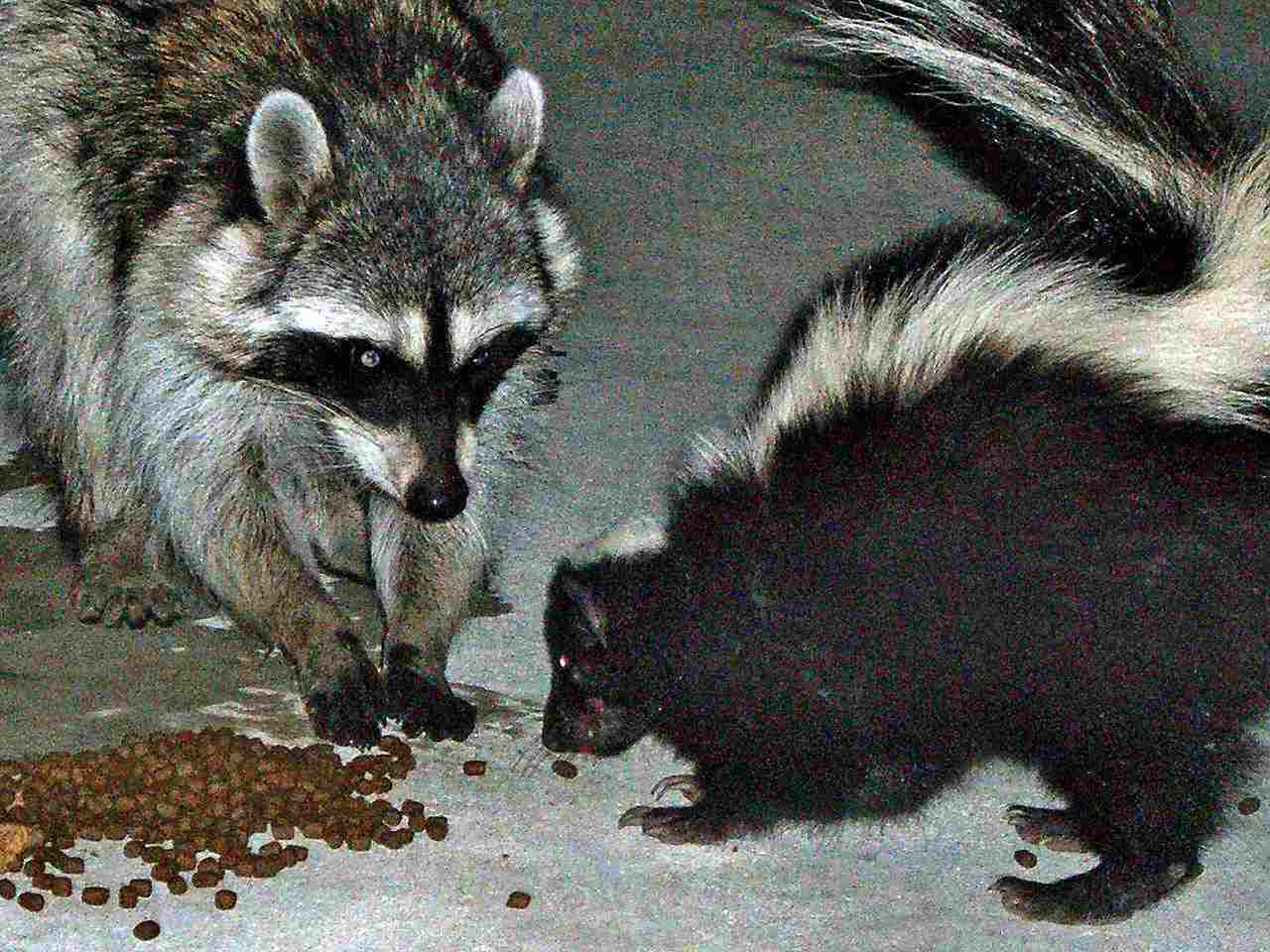
Raccoon:
Omnivorous diet; opportunistic feeders that consume fruits, nuts, insects, small mammals, and even human garbage.
Skunk:
Omnivores as well, feeding on insects, small mammals, fruits, and plants.
Comparison:
Both exhibit an omnivorous diet, adapting to the availability of resources in their habitats.
Ecological Implications:
Overlapping diets may lead to competition for resources, influencing ecosystem balance.
16. Intelligence:
Raccoon:
Highly intelligent; capable of problem-solving and learning from experiences.
Skunk:
Moderate intelligence; less studied compared to raccoons.
Comparison:
Raccoons are generally recognized for higher intelligence compared to skunks.
Ecological Implications:
Differences in intelligence may influence foraging strategies, adaptation to new environments, and overall survival skills.
17. Social Behavior:
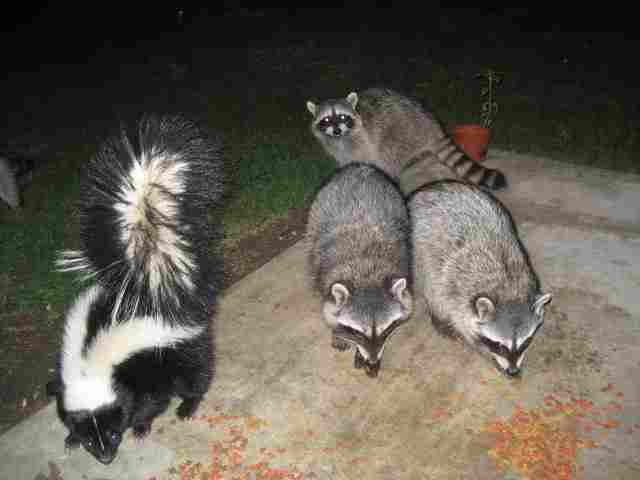
Raccoon:
Typically solitary, but can exhibit communal behaviors, especially during mating season.
Skunk:
Mostly solitary, with limited social interactions except during the breeding season.
Comparison:
Both raccoons and skunks are generally solitary animals with occasional social interactions.
Ecological Implications:
Solitary behaviors may affect their territoriality, resource utilization, and overall impact on local ecosystems.
18. Mode of Reproduction:
Raccoon:
Polygamous mating system; mating occurs in late winter or early spring.
Skunk:
Generally polygamous; mating season varies by species but often occurs in late winter or early spring.
Comparison:
Both raccoons and skunks exhibit polygamous mating systems with a similar mating season.
Ecological Implications:
Similar reproductive strategies may indicate adaptation to environmental factors influencing breeding opportunities.
19. Parental Behavior:
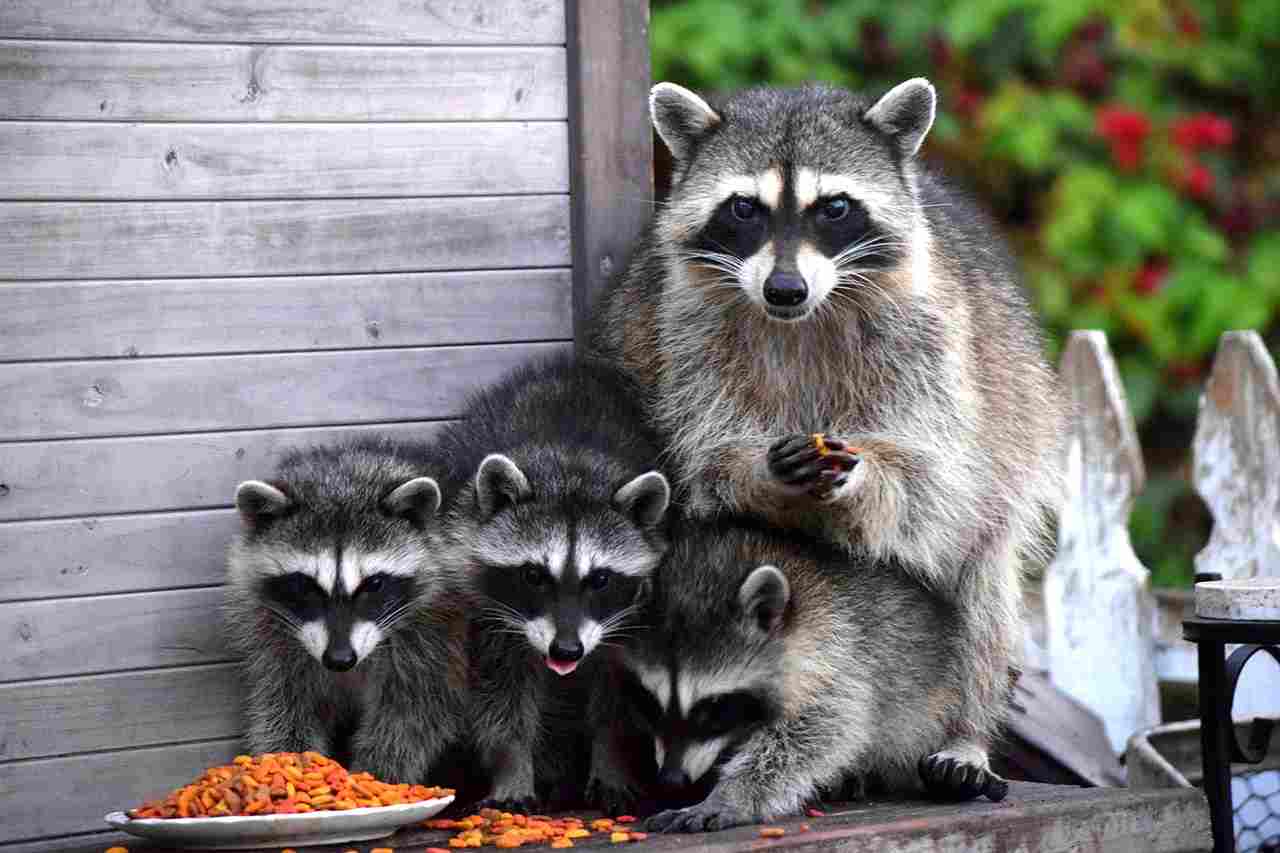
Raccoon:
Females construct nests for their young; mothers provide care and protection.
Skunk:
Mothers create dens for their offspring; females are the primary caregivers.
Comparison:
Both species display maternal care, creating nests or dens for their young.
Ecological Implications:
Parental care strategies contribute to the survival of offspring and population dynamics within their respective habitats.
20. Proximity to Human-Inhabited Areas:
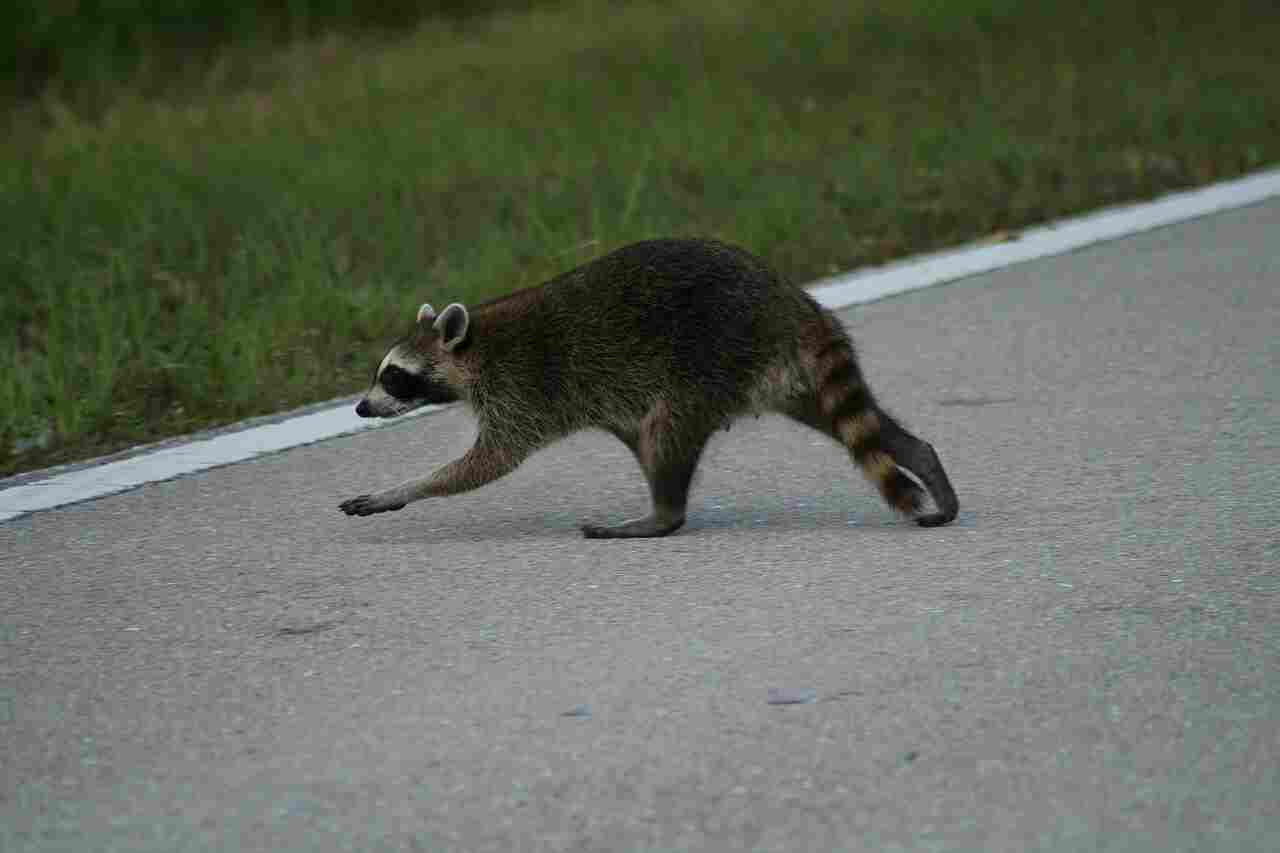
Raccoon:
Highly adaptable to urban environments; frequently found in residential areas.
Skunk:
Can inhabit suburban areas, especially when food sources are available.
Comparison:
Both raccoons and skunks demonstrate adaptability to human-inhabited areas.
Ecological Implications:
Increased proximity to humans may lead to conflicts and affect the behavior and ecology of these species.
21. Behavior Toward Humans:
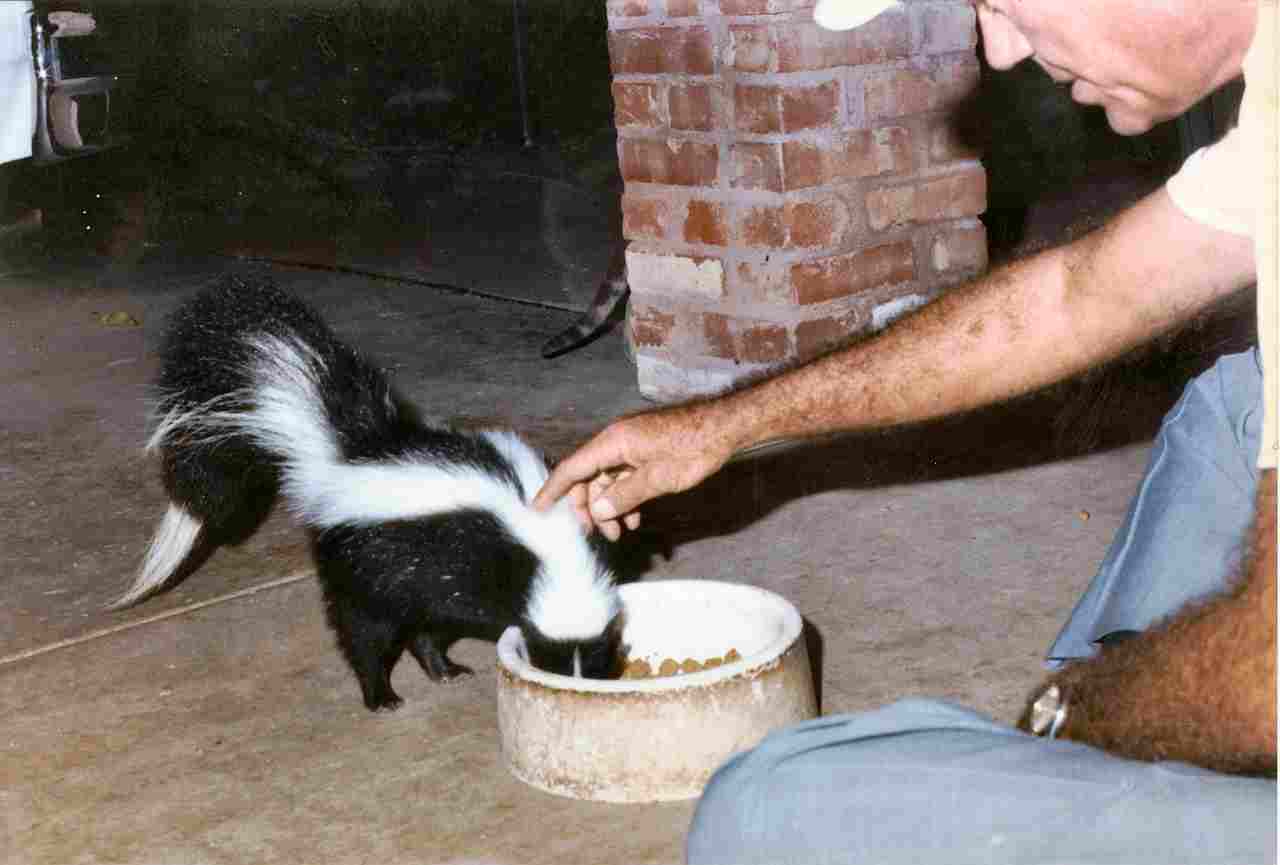
Raccoon:
Can display bold behavior, especially in urban areas, where they may become accustomed to human presence.
Skunk:
Generally avoid human interaction; may spray if they feel threatened.
Comparison:
Raccoons may exhibit bolder behavior compared to skunks in the presence of humans.
Ecological Implications:
Human interactions and responses to these species can impact their behavior, distribution, and survival strategies.
22. Danger Posed to Humans:
Raccoon:
Generally not considered dangerous, but may carry diseases like rabies.
Skunk:
Typically not aggressive, but can pose a threat if cornered or provoked; can spray a noxious liquid.
Comparison:
Both raccoons and skunks can pose some danger, but the nature of the threat differs.
Ecological Implications:
Understanding potential threats helps in implementing safety measures and managing interactions in shared environments.
23. Associated Precautions:
Raccoon:
Avoid feeding or approaching; secure garbage to deter raccoons.
Skunk:
Keep a safe distance; avoid provoking or cornering skunks.
Comparison:
Precautions involve minimizing direct contact and addressing attractants, tailored to each species.
Ecological Implications:
Human behavior and precautions influence the coexistence of these species in urban and suburban settings.
24. Conservation Status:
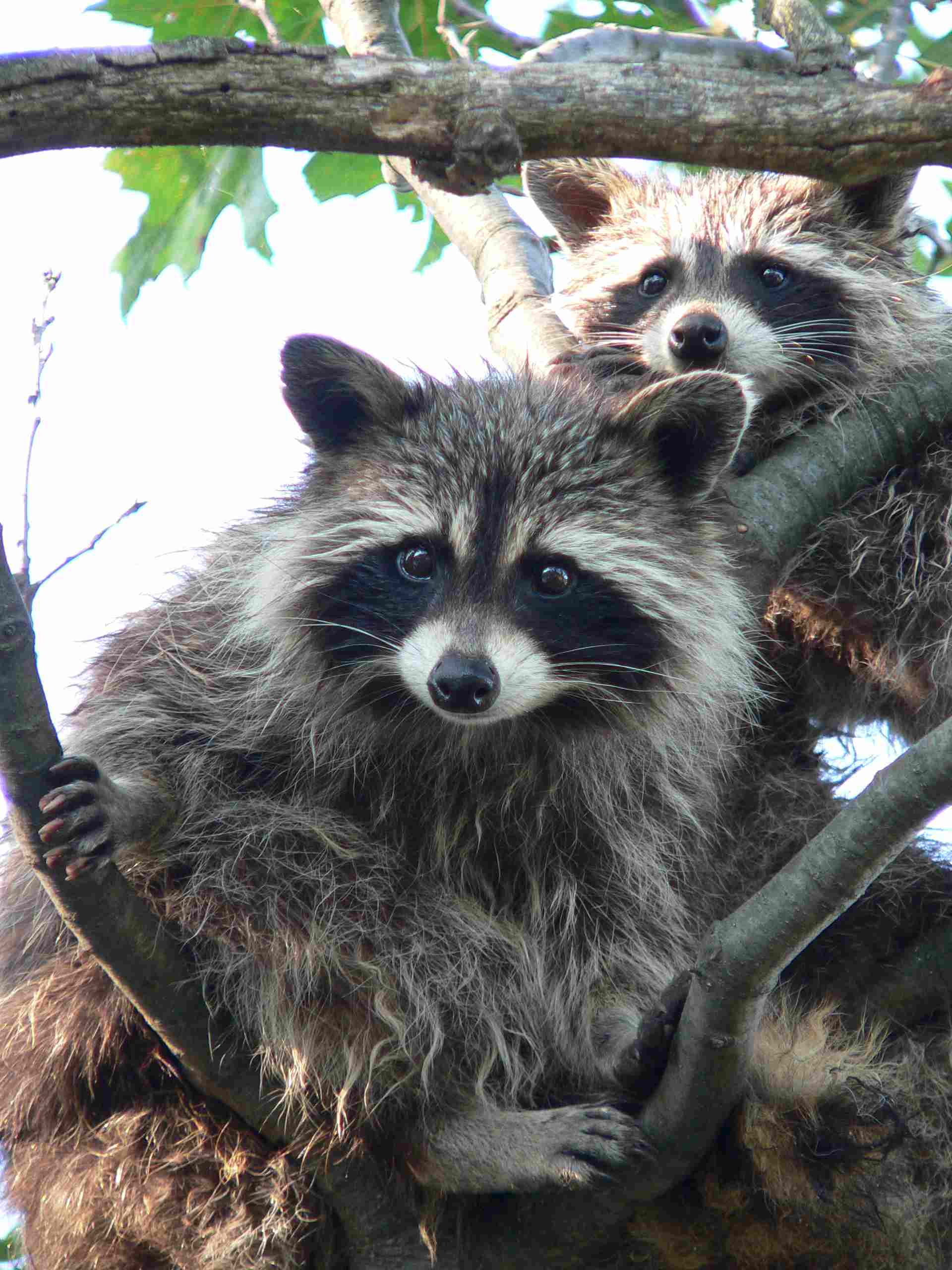
Raccoon:
Least Concern; widespread and adaptable to various environments.
Skunk:
Conservation status varies by species; some are of Least Concern, while others face threats.
Comparison:
Raccoons generally have a more stable conservation status compared to some skunk species.
Ecological Implications:
Conservation efforts may need to focus on specific skunk species facing threats to maintain biodiversity.
Summary of Comparison
Taxonomy:
Raccoons: Procyonidae family, Procyon genus.
Skunks: Mephitidae family, Mephitis or Spilogale genus.
Appearance:
Raccoons: Grayish fur with a black mask.
Skunks: Black and white patterns, warning coloration.
Size:
Similar size range: 2 to 3 feet.
Weight:
Both fall in the range of 10 to 30 pounds.
Bite Force (PSI):
Raccoons: Approximately 60 PSI.
Skunks: Bite force less studied, presumed lower.
Physical Offensive Advantages:
Raccoons: Sharp claws and dexterous paws.
Skunks: Spray a noxious liquid.
Physical Defensive Advantages:
Raccoons: Climbing abilities and agility.
Skunks: Defensive spraying.
Speed:
Raccoons: Up to 15 mph.
Skunks: 5 to 10 mph.
Agility:
Raccoons generally more agile, especially in climbing.
Senses:
Differences in night vision, sense of touch, and smell.
Overall Physical Capacity:
Raccoons exhibit a more diverse range of physical abilities.
Habitat Preference(s):
Raccoons are adaptable; skunks prefer grasslands and woodlands.
Tracks:
Raccoon prints more hand-like; skunk prints more clawed.
Lifespan:
Both have relatively short lifespans in the wild.
Mode of Feeding:
Omnivorous diet for both, adapting to available resources.
Intelligence:
Raccoons generally recognized for higher intelligence.
Social Behavior:
Both generally solitary with occasional social interactions.
Mode of Reproduction:
Polygamous mating systems, mating in late winter or early spring.
Parental Behavior:
Both species display maternal care.
Proximity to Human-Inhabited Areas:
Both adaptable to urban and suburban environments.
Behavior Toward Humans:
Raccoons may display bolder behavior; skunks generally avoid interaction.
Danger Posed to Humans:
Both can pose some danger; nature of threat differs.
Associated Precautions:
Precautions involve minimizing direct contact and addressing attractants.
Conservation Status:
Raccoons generally Least Concern; skunks vary by species.
Conclusion:
I) Similarities:
Both raccoons and skunks exhibit adaptability to various habitats and are opportunistic omnivores.
II) Differences:
Divergent defensive mechanisms, intelligence levels, and conservation statuses highlight distinctions between raccoons and skunks.
